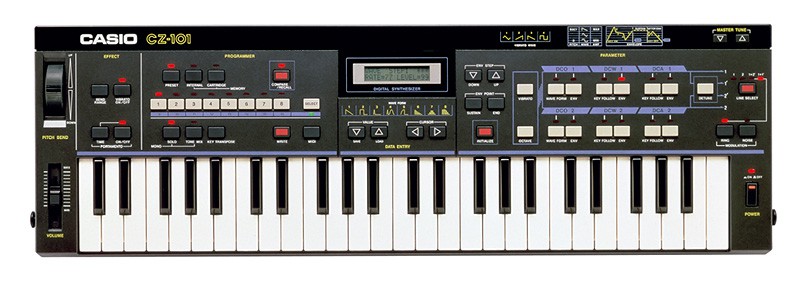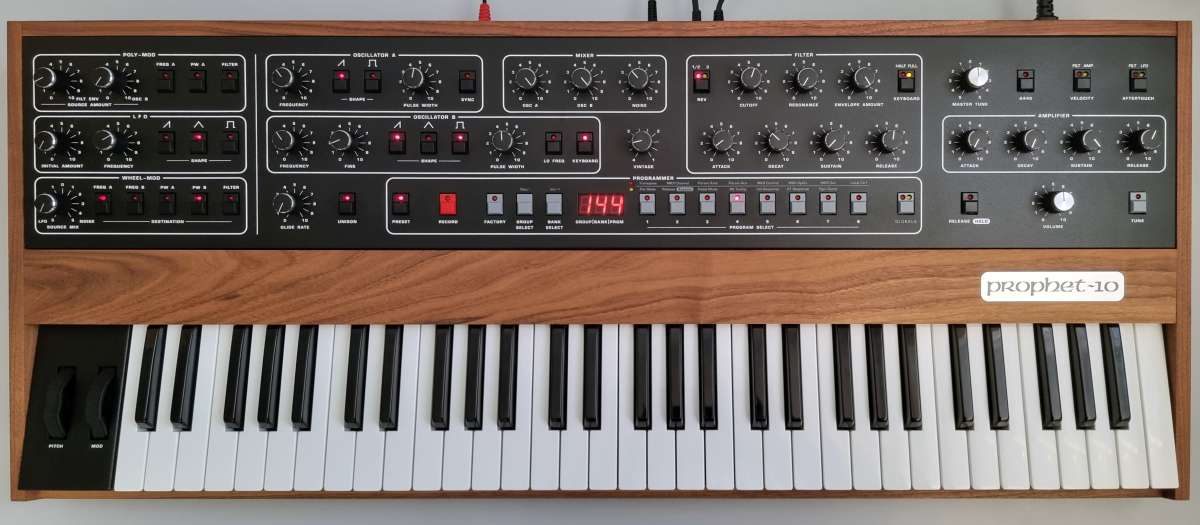The Casio CZ synthesizer series was first introduced by Casio in the early 1980s and quickly gained popularity among musicians and producers for their compact size and affordable price. The phase distortion synthesis used in the CZ series, which stands for “Compact and Zooming,” was noteworthy because it was a relatively new technique for creating sounds at the time.
The Casio CZ synthesizers’ portability and compact size were two of their standout qualities. They are a popular option for traveling musicians because they are lightweight and easy to transport. The CZ series synthesizers were compact, but they were jam-packed with a variety of features and abilities.
Phase distortion synthesis, a then-relatively-new method of sound creation, was a feature that set the Casio CZ series apart. Using this method, the synthesizers were able to create a variety of sounds, including bass, leads, and percussion. The CZ synthesizers also included a variety of built-in effects, such as delay and reverb, which enhanced the sounds the synthesizer produced.
The Casio CZ series’ use of digital technology was yet another distinguishing trait. The synthesizers had powerful microprocessors that provided fine control over the sounds generated. The CZ series was able to create a variety of sounds that were impossible with conventional analog synthesizers thanks to this and the use of phase distortion synthesis.
Another noteworthy aspect of the Casio CZ series was its reasonable cost. The Casio CZ series was affordable for a wide range of musicians and producers at a time when the majority of professional synthesizers cost thousands of dollars.
Phase distortion synthesis was a new type of synthesis that Casio unveiled in its CZ synthesizer line in the middle of the 1980s (PDS). Phase distortion synthesis is a technique for creating sounds that rely on changing a waveform’s phase. PDS makes it possible to create a wider variety of sounds than is possible with conventional subtractive synthesis because it gives users more control over the harmonic content of a sound.
In terms of music technology, the Casio CZ series of synthesizers represented a significant advancement. Its portability, low cost, and abundance of high-tech features made it possible for musicians to create a variety of sounds. Phase Distortion Synthesis, a novel synthesis technique that marked a significant advancement in sound creation, was also introduced with the CZ series. The CZ series is still popular among musicians and producers who appreciate its distinctive sound and adaptability today. It is regarded as a classic.
One of the key features of the Casio CZ synthesizers was their compact size and portability. They were designed to be lightweight and easy to transport, making them a popular choice for musicians on the go. Despite their small size, however, the CZ series synthesizers were packed with a wide range of features and capabilities.
The Casio CZ series was notable for its use of phase distortion synthesis, a method of sound generation that was relatively new at the time. This technique allowed the synthesizers to produce a wide range of sounds, including bass, leads, and percussive sounds. The CZ synthesizers also featured a wide range of built-in effects, including reverb and delay, which helped to enhance the sounds produced by the synthesizer.
Another key feature of the Casio CZ series was its use of digital technology. The synthesizers were equipped with powerful microprocessors that allowed for precise control over the sounds produced. This, combined with the use of phase distortion synthesis, allowed the CZ series to produce a wide range of sounds that were not possible with traditional analog synthesizers.
The Casio CZ series was also notable for its affordable price. At a time when most professional synthesizers cost thousands of dollars, the Casio CZ series was priced at a fraction of the cost, making it accessible to a wide range of musicians and producers.
Overall, the Casio CZ series of synthesizers was a major development in the world of music technology. It was portable, affordable and packed with advanced features that allowed musicians to produce a wide range of sounds. The CZ series also introduced a new synthesis method, Phase Distortion Synthesis, that was a major development in the field of sound generation. Today, the CZ series is considered a classic and still has a following among musicians and producers who value its unique sound and versatility.
Used by
- Depeche Mode: The band used the Casio CZ-101 on their album “Some Great Reward” (1984) to add a unique and distinctive sound to their music.
- New Order: The band used the Casio CZ-1000 on their album “Power, Corruption & Lies” (1983) and other of their albums, to add a unique and distinctive sound to their music.
- Pet Shop Boys: The band used the Casio CZ-1000 and CZ-3000 in their early albums and live performances.
- OMD (Orchestral Manoeuvres in the Dark): The band used the Casio CZ-101 and CZ-1000 in their albums and live performances.
- Jean-Michel Jarre: Jarre used the Casio CZ-101 and CZ-3000 in his album “Zoolook” (1984) and other of his albums and live performances.
- Vince Clarke: The musician and songwriter used the Casio CZ-101 and CZ-3000 extensively in his work with the band Depeche Mode and his solo projects.
- Aphex Twin: The musician used the Casio CZ-101 in his early albums, adding a unique and distinctive sound to his music.
- Harold Faltermeyer: The German keyboardist and composer used the Casio CZ-101 in his album “Axel F” and other of his albums, adding a unique and distinctive sound to his music.



